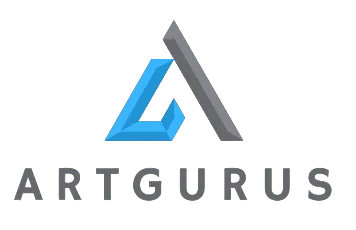Introduction
In the digital age, social media platforms have transformed the way we communicate, share information, and connect with others. Beyond being tools for personal connection and entertainment, social media has proven to be a powerful tool for educational purposes. This blog will delve into the best ways to utilize social media for educational advancement, exploring how it can enhance learning experiences and open up new opportunities for both students and educators.
- Access to a Vast Repository of Information
The internet is a treasure trove of information, and social media platforms serve as gateways to this wealth of knowledge. Platforms like Twitter, Facebook, and Instagram allow educators and students to follow accounts and pages related to their field of interest. By doing so, they gain access to a constant stream of educational content, from articles and research papers to videos and infographics. This makes it easier than ever to stay updated on the latest developments in any academic area.
- Online Communities and Support
Social media is not just a place to consume information; it’s a platform for building communities. Students and educators can connect with like-minded individuals and experts in their field through groups, forums, and discussions. Online communities provide a space for sharing ideas, asking questions, and seeking support, fostering a sense of belonging and collaboration.
- Collaborative Learning Opportunities
One of the most significant advantages of social media is its ability to facilitate collaborative learning. Platforms like Slack, WhatsApp, and Discord are excellent for group discussions and project collaborations. Students can easily create study groups, share resources, and work together on assignments, even when they are physically distant.
- Multimedia Learning Resources
Social media is rich in multimedia content, making it an ideal platform for visual and auditory learners. Educators can create engaging videos, podcasts, and webinars to supplement traditional teaching methods. These resources can be shared across platforms, allowing students to learn at their own pace and revisit materials as needed.
- Promoting Critical Thinking and Digital Literacy
Navigating social media requires digital literacy, which is an essential skill in today’s world. When used for educational purposes, social media can teach students how to critically evaluate information sources, identify bias, and distinguish between credible and unreliable content. These skills are not only valuable in academia but also in everyday life.
- Global Networking and Cultural Exposure
Social media platforms break down geographical barriers, enabling students and educators to connect with people from around the world. This global networking can be a valuable asset for research collaborations, cultural exchange, and gaining diverse perspectives on various subjects.
- Engaging with Industry Professionals
Many professionals and experts in various fields maintain a presence on social media. By following and engaging with these individuals, students can gain insights into real-world applications of their studies and build valuable connections for future career opportunities.
- Personalized Learning
Social media algorithms analyze users’ interests and behaviors to provide personalized content recommendations. This feature can be harnessed for educational purposes by tailoring content to students’ individual learning preferences and needs. Educators can curate content or suggest relevant accounts for their students to follow, enhancing the learning experience.
- Encouraging Self-Directed Learning
Social media empowers students to take control of their education and become self-directed learners. Instead of relying solely on traditional classroom instruction, they can use social media to explore topics of personal interest, seek out resources, and pursue independent research.
- Showcasing Achievements and Building a Portfolio
Platforms like LinkedIn and Twitter are excellent for showcasing academic achievements, research publications, and projects. Students can build an online portfolio that demonstrates their skills and knowledge to potential employers and collaborators.
Conclusion
The integration of social media into education represents a significant shift in the way we learn and teach. By harnessing the power of these platforms, educators and students can access a wealth of information, build communities, collaborate globally, and develop essential skills for the digital age. To make the best use of social media for educational purposes, it is crucial to approach it with intention, critical thinking, and a commitment to fostering a positive and enriching online learning environment. As social media continues to evolve, its potential as a tool for educational advancement is limitless, and those who embrace it will undoubtedly reap the benefits in the pursuit of knowledge and personal growth.







333 responses
Un calido saludo a todos los maestros de las apuestas !
Las plataformas de casinos fuera de espaГ±a ofrecen mГ©todos de pago modernos y retiros instantГЎneos. . La opciГіn de jugar en casinos online fuera de espaГ±a resulta atractiva para quienes valoran la privacidad. El acceso rГЎpido y sin verificaciones es una gran ventaja de casino online fuera de espaГ±a.
La opciГіn de jugar en casino por fuera resulta atractiva para quienes valoran la privacidad. La experiencia en casinos online fuera de espaГ±a se caracteriza por retiros sin comisiones y depГіsitos flexibles. Las plataformas de casinos fuera de espaГ±a ofrecen mГ©todos de pago modernos y retiros instantГЎneos.
п»їcasinos online fuera de EspaГ±a con pagos rГЎpidos – https://casinosfueradeespana.blogspot.com/#
?Que tengas la fortuna de disfrutar de increibles premios !
п»їп»їcasino fuera de espaГ±a
Your article helped me a lot, is there any more related content? Thanks!
?Warm greetings to all the expert bettors !
Players looking for exciting offers often choose bonus no deposit because it provides easy access to rewards. Many international platforms highlight no deposit bonus casino to attract new members and increase engagement. The popularity of such promotions continues to grow as gamblers search for the best deals in the market.
Players looking for exciting offers often choose online casino no deposit bonus because it provides easy access to rewards. Many international platforms highlight bonus no deposit to attract new members and increase engagement. The popularity of such promotions continues to grow as gamblers search for the best deals in the market.
Latest updates about no deposit bonus greece promotions – https://nodepositbonusgreece.guru/#
?I wish you incredible victories !
bonus no deposit